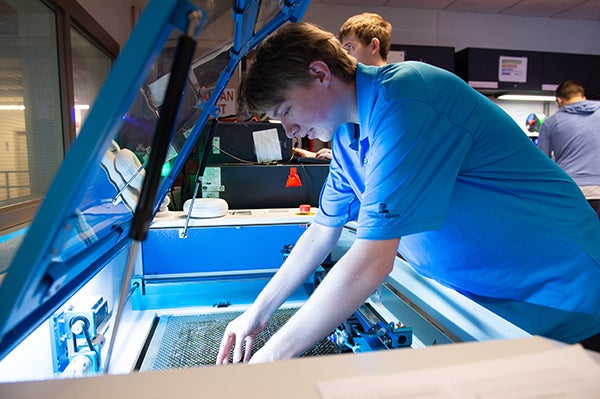
Author: Michael Kronmiller
Mechanical Engineering Major
When I applied to colleges, an important factor in my decision process was how much real-world experience I would get while I was working toward my Aeronautical Engineering degree. It was clear to me that Rensselaer was one of the best in this respect, offering resources like the MILL (Manufacturing Innovation Learning Lab), IED (Introduction to Engineering), and other resources on campus that were important to me not only as an aspiring engineer, but also as an entrepreneur.
During the latter years of my time in high school, I had started a small business to develop drone technology that could be used in areas of the world where other vehicles were less viable. This was centered around my senior project that required me to look at where technology could be used to make others’ lives easier. Even after the conclusion of my senior year, I knew I wanted to continue that work and I knew I wanted to utilize the resources at RPI.
After some looking around I found a smaller gem that would be where I spent most of my free time for the next two years, the RPI Forge.
The Forge is a student-run makerspace that overlooks the MILL in the CII and when I joined, it was a small operation with a few 3D printers and a laser cutter. For my company, this was perfect. In high school I utilized 3D printers to rapid prototype my drone designs and it was great to jump in and use the equipment I was already familiar with.
In my first year at RPI, I was taught how to use professional CAD tools like SolidWorks and Siemens NX , which made it even easier to design my prototypes. I was then able to take the prototypes to the Forge and print them out to see what improvements needed to be made. This was invaluable and I knew I wasn’t the only student who could use the space in this way.
I started to offer some help to the Forge, creating systems to accommodate more students and faculty to use the machinery. I implemented a mentoring program where students would teach other students to become familiar with the equipment in the Forge, helping expand the knowledge base.
With the skills I had developed at RPI, both in class and in the Forge, I designed a prototype that I was ready to test. After determining that my drone was flight ready, I decided to test it in the most extreme flight environment in the world, the Himalayas! I booked a flight to Nepal and 28 hours later I was in Kathmandu, where I gave talks to local schools about the benefits of STEM in the classroom, using my drone as a teaching tool. I decided to test my drone at Kala Patthar on Mt. Everest because it would be ideal to assist with search and rescue operations, which are needed frequently due to avalanches in the area. Even at 18,500 feet, the drone flew flawlessly. It was so fulfilling to see the design I had worked feverishly on function in the high altitude environment. After a successful flight, I returned to the U.S. to further my education at RPI.
This year, thanks to the support from Dean Shekhar Garde in the School of Engineering, we were able to renovate the Forge in a larger space, allowing us to provide this resource to even more students. We look forward to seeing what other students create here, and you can see updates on our Facebook page (RPI FORGE).
You can also see my project updates at nepalrobotics.org




